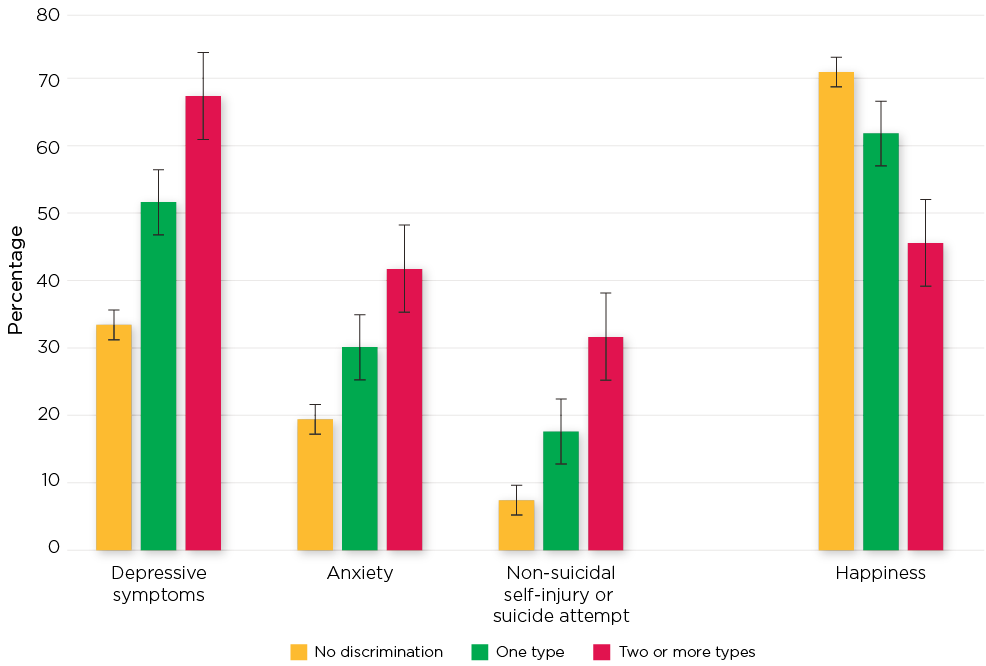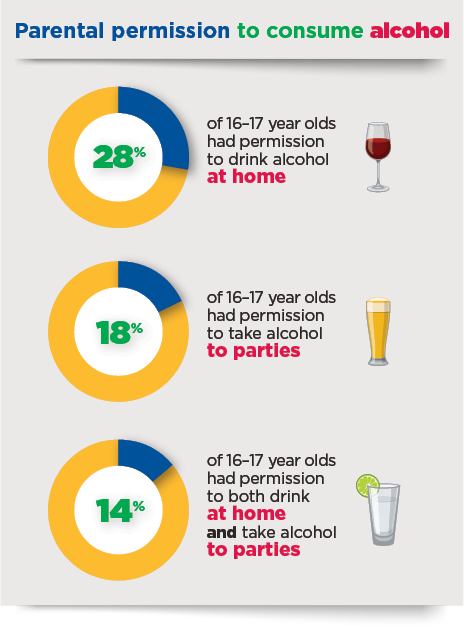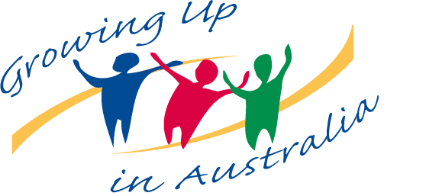Important discoveries our study participants helped us to make
LSAC study participants have helped us to make some important discoveries that will inform public policy and improve the lives of all Australians and their families, from childhood through to young adulthood. Recent discoveries include:
Increased frequency of social networking sites use was associated with a greater risk of elevated symptoms of depression and anxiety.
- Daily use of SNS was more common at age 16-17 than at younger ages and also more common among females than males throughout adolescence.
- One in four adolescents experienced cyberbullying between the ages of 14-15 and 16-17.
- Adolescents who had been cyberbullied were more likely to show elevated symptoms of depression and anxiety compared with other adolescents.
Figure 4: Mean trajectories of elevated depressive symptoms by frequency of SNS use from ages 12-13 to 16-17

Read more in our Adolescents online snapshot.
Having a close relationship with a parent is protective against self-injuring
- Having a close relationship with a parent is protective against self-injuring, while poor parent mental health in early childhood is a risk for adolescent self-injury several years later.
- Thoughts and acts of self-injury are common among young people, and both are much higher in girls than boys.
- Between the ages of 14 and 17, 30% of young people had thought about self-injuring, and 18% reported self-injury.
- Young people who are same-sex attracted at age 14-15 are at much higher risk of self-injuring.
Figure 4: Key risk factors across childhood associated with self-injury

Read more in our Self-injury among adolescents snapshot.
Discrimination is common among Australian teens.
- One in three 14-15 year olds reported at least one type of discrimination in 2014; and a similar proportion experienced discrimination as 16-17 year olds in 2016.
- Body discrimination (due to body size, shape or physical appearance) is the most widespread type of discrimination among teens overall.
- One third of teens reported body discrimination at least once between the ages of 14 and 17, a time when they are often focused on their appearance and peer approval.
Figure 3: The percentage of 16-17 year olds predicted to report signs of mental wellbeing according to the number of types discrimination experienced

Read more in our Teenagers' experiences of discrimination snapshot.
Teens allowed to drink at home were more likely to have experienced alcohol-related harm
- In 2016, around 28% of teens aged 16-17 were allowed to drink alcohol at home. Approximately 18% of teens of this age were permitted to take alcohol to parties or social events.
- More frequent parental alcohol consumption was associated with a greater likelihood of teens being allowed to drink at home.
- Teens allowed to drink at home were more likely to have experienced alcohol-related harm compared to those without permission (23% vs 17%, respectively).

Read more in our Alcohol use among teens allowed to drink at home snapshot.
You can also find more of our recent findings on our snapshots page.






